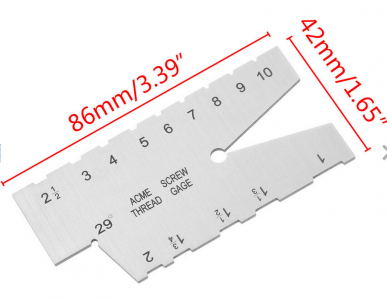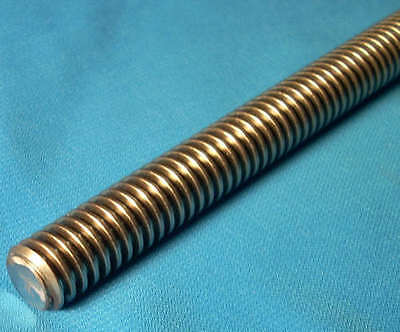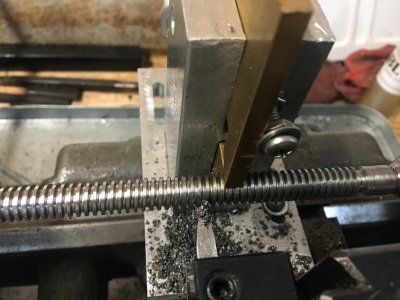-
Welcome back Guest! Did you know you can mentor other members here at H-M? If not, please check out our Relaunch of Hobby Machinist Mentoring Program!
You are using an out of date browser. It may not display this or other websites correctly.
You should upgrade or use an alternative browser.
You should upgrade or use an alternative browser.
Choosing the right alloy steel - and make a quill
- Thread starter graham-xrf
- Start date
- Joined
- Jan 20, 2018
- Messages
- 5,645
In my internet searches, I came across a new thing to learn about. From the sentence..
"Blaze or consecration hardening of EN24T can accord a case acerbity of 50 HRc or higher."
OK -so I don't yet know what on Earth is "consecration" hardening, and "acerbity" is a new word for me. The mischief in my cartoon mind is right now showing a guy with a blazing torch in one hand, Bible in the other, offering up a prayer before applying the fires of Hell!
Surface flame hardening - right?
This is obviously a direct translation from the Chinese by someone who is not a native English speaker but possesses a Chinese-English dictionary. We've had hours of hilarity from reading entire machine manuals translated in this manner. I have a friend from the U.K. who has made a nice living writing manuals for a Japanese equipment manufacturer.
- Joined
- Nov 17, 2017
- Messages
- 1,525
This is obviously a direct translation from the Chinese by someone who is not a native English speaker but possesses a Chinese-English dictionary. We've had hours of hilarity from reading entire machine manuals translated in this manner. I have a friend from the U.K. who has made a nice living writing manuals for a Japanese equipment manufacturer.
A very long time ago, IBM thought that they had cracked the language translation barrier. So they went to Boeing and took and Aircraft maintenance manual and translated it to Germain and back. Most of the translation went well, but there were dozens of cases when the doubly translated manual had the phrase "water goat". It ended up that the original word pair was 'hydraulic ram' which, without context, had been translated into "water goat".
- Joined
- May 27, 2016
- Messages
- 3,471
In the spirit of using one machine to fix the other - or even using a machine to fix itself, you can bet I am going to attempt this. If all else fails, I have a pal who is a member of a model machinist club, but I am not anticipating going that route unless I mess up really badly.You can cut the alignment keyway with the carriage and a tool bit with the proper profile held horizontally.
- Joined
- May 27, 2016
- Messages
- 3,471
Regarding the poorly translated specification ..
"Blaze or consecration hardening of EN24T can accord a case acerbity of 50 HRc or higher."
It is not hard to see that "acerbity" means "hardness", simply because it has Rockwell units, and among it's definitions, there is "forceful, trenchant, disagreeable.
More speculative is that "blaze or consecration hardening" is the attempt to translate "flame or induction hardening".
This because "induction" is also a religious ceremony done for Buddhist and other monks, and the association between "blaze" and "flame" is more or less obvious.
Even so, if I ever get up to hardening anything some day, I will not be able to think of it as anything other than "consecrated". I suppose if the quench goes wrong, we might add "cremated"!
"Blaze or consecration hardening of EN24T can accord a case acerbity of 50 HRc or higher."
It is not hard to see that "acerbity" means "hardness", simply because it has Rockwell units, and among it's definitions, there is "forceful, trenchant, disagreeable.
More speculative is that "blaze or consecration hardening" is the attempt to translate "flame or induction hardening".
This because "induction" is also a religious ceremony done for Buddhist and other monks, and the association between "blaze" and "flame" is more or less obvious.
Even so, if I ever get up to hardening anything some day, I will not be able to think of it as anything other than "consecrated". I suppose if the quench goes wrong, we might add "cremated"!
- Joined
- May 27, 2016
- Messages
- 3,471
Darn! It looks like turning into a "Tailstock TLC thing". All you folk were absolutely right about the slippery slope! The pressure of "mission creep" is now overwhelming. It seems the only way to duck it is not to look!
The ACME external thread from the SB9A flops about like a stirrer in a tall glass! I offered it at both quills. The SB9C thread fits it's own brass insert rather better, but even that "good" one could not be described as great.
View attachment Worn ACME Threads2.mp4
Left hand 10 x 1/2" ACME as a ready cut stock is thin on the ground here (UK). I suppose I could cut off the threads and salvage the back end with the 3/4" thrust disc part, turn it down some, and join it onto a new threaded section with Locktite and a small pin. OR - just turn up an an entire new part. Right now, it is looking like this might be the best way.
I have invested in one of these ACME tool grind assist gauges.

Whichever way this goes - it is going to be interesting! I can (sort of) grind a HSS tool to cut OK. Accurately getting 29°, with the front cut back to the correct width, with correct side and back rake clearance and all? Er.. OK. Let's give it a try. I will likely not be posting a video of the attempt. The fumble limit has been reached!
P.S. It is that time of year. Have a good Christmas folks!
The ACME external thread from the SB9A flops about like a stirrer in a tall glass! I offered it at both quills. The SB9C thread fits it's own brass insert rather better, but even that "good" one could not be described as great.
View attachment Worn ACME Threads2.mp4
Left hand 10 x 1/2" ACME as a ready cut stock is thin on the ground here (UK). I suppose I could cut off the threads and salvage the back end with the 3/4" thrust disc part, turn it down some, and join it onto a new threaded section with Locktite and a small pin. OR - just turn up an an entire new part. Right now, it is looking like this might be the best way.
I have invested in one of these ACME tool grind assist gauges.

Whichever way this goes - it is going to be interesting! I can (sort of) grind a HSS tool to cut OK. Accurately getting 29°, with the front cut back to the correct width, with correct side and back rake clearance and all? Er.. OK. Let's give it a try. I will likely not be posting a video of the attempt. The fumble limit has been reached!
P.S. It is that time of year. Have a good Christmas folks!
- Joined
- Jan 20, 2018
- Messages
- 5,645
And so it begins. 1/2-10 Acme is not going to be easy to cut, hopefully you have a follower rest. Without one it will be damn near impossible. You can get the threaded rod off eBay for under $40 US delivered to the UK. Not nearly as educational, but you will probably end up buying it anyway.

Merry/Happy Christmas/Chanukkah to all.
edit: Just watched the video. Given the fit in the bronze inserted spindle, the wisest course might be to live with it. It's not that sloppy and will not affect the function or precision of the lathe.

304014-3-LH 1/2-10 x 36 inch 1 start Acme threaded rod for lead screw LEFT HAND | eBay
A 1 start has only a single thread cut. A 2 start has 2 threads and. What is Alloy Steel?. Alloy steel is pre-heat treated 4140 alloy. Harder to machine and also tougher. Hardness is 271 Brinell. Alloy lead screws are black-oxide finish.
www.ebay.com
Merry/Happy Christmas/Chanukkah to all.
edit: Just watched the video. Given the fit in the bronze inserted spindle, the wisest course might be to live with it. It's not that sloppy and will not affect the function or precision of the lathe.
Last edited:
I made a really rough follower rest when I cut an acme for my large dial upgrade on my little SB-9”
I’ve even seen some people make one off wood followers for a one time use when cutting Acme threads. My attempt was a 3/8”-10 LH acme... and although it took a while to tweek my aluminum follower...the screw came out surprisingly well.
Tex-va on PM site did a wonderful write up of that acme thread job and it’s still there but all of the awesome pictures have now been blurred by those photoshopped bastards. I hope they rot in hell.
I’ve even seen some people make one off wood followers for a one time use when cutting Acme threads. My attempt was a 3/8”-10 LH acme... and although it took a while to tweek my aluminum follower...the screw came out surprisingly well.
Tex-va on PM site did a wonderful write up of that acme thread job and it’s still there but all of the awesome pictures have now been blurred by those photoshopped bastards. I hope they rot in hell.

Last edited:
Well you're down the rabbit hole for sure now. Trying to make the internal thread is going to be a tussle and the taps or tools needed to make it don't seem financially feasible. But 1/2 -10 LH nuts are available in cast iron or bearing bronze. Use that as an insert in the tail end secured with maybe set screws (or as the English prefer "grub screws"). The diameter and length of the spindle is going to give you some difficulty but is doable. You already have the material but my opinion you want something tuff not hard, big difference. When cutting an Acme turn you compound parallel to the spindle, cut a register on the end to the bottom diameter of the thread. With your tool ground a tad narrower than called for when the tool touches the bottom diameter you now use the compound to widen the thread until the nut achieves the fit you desire. If careful you shave both sides of the thread this way and get a nice finish. I've been around enough machinists to now you are going to say this is rubbish but the skills needed to fix it this way is not beyond the beginner if you take your time.
OH! Solve one problem at a time and don't try and solve them all at once. When one solution is achieved you can now focus on the next and solutions become more obvious. Unless it leads you farther down the hole, been there dun that !

